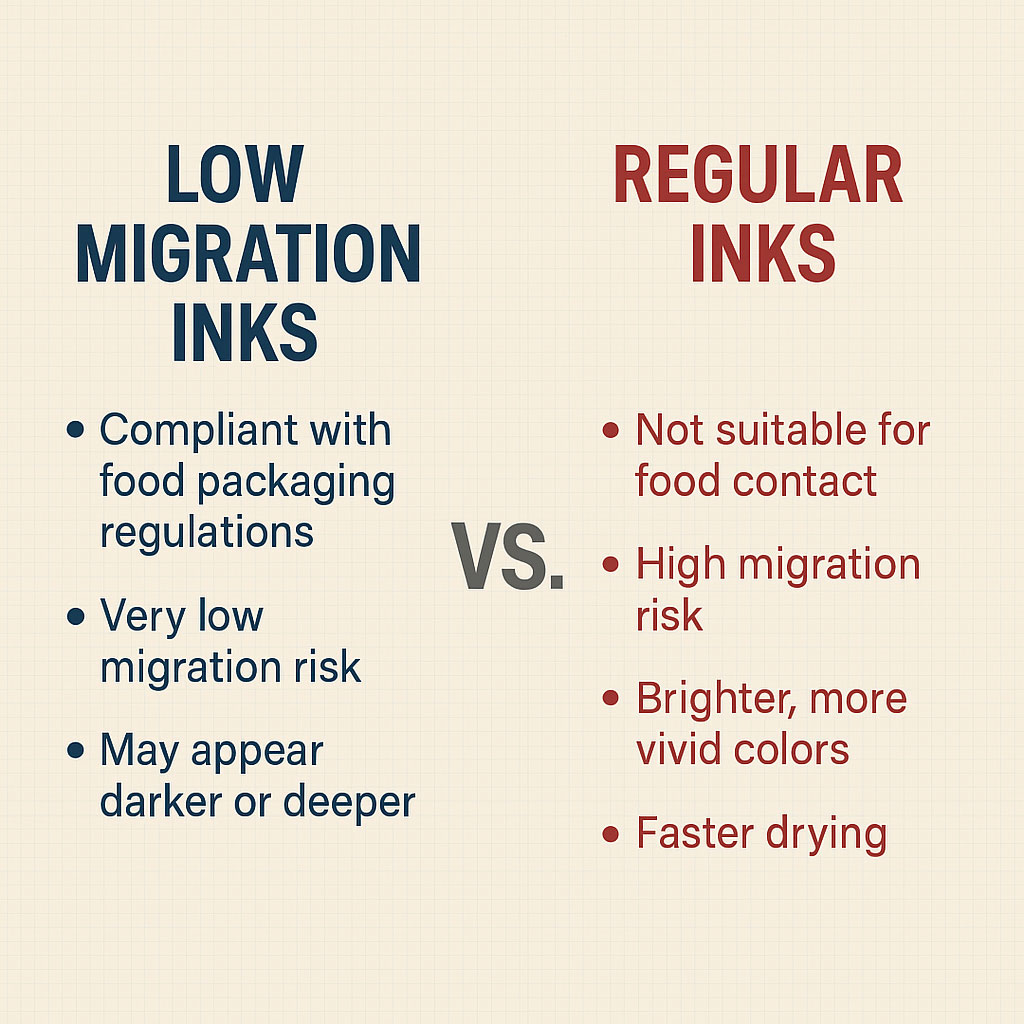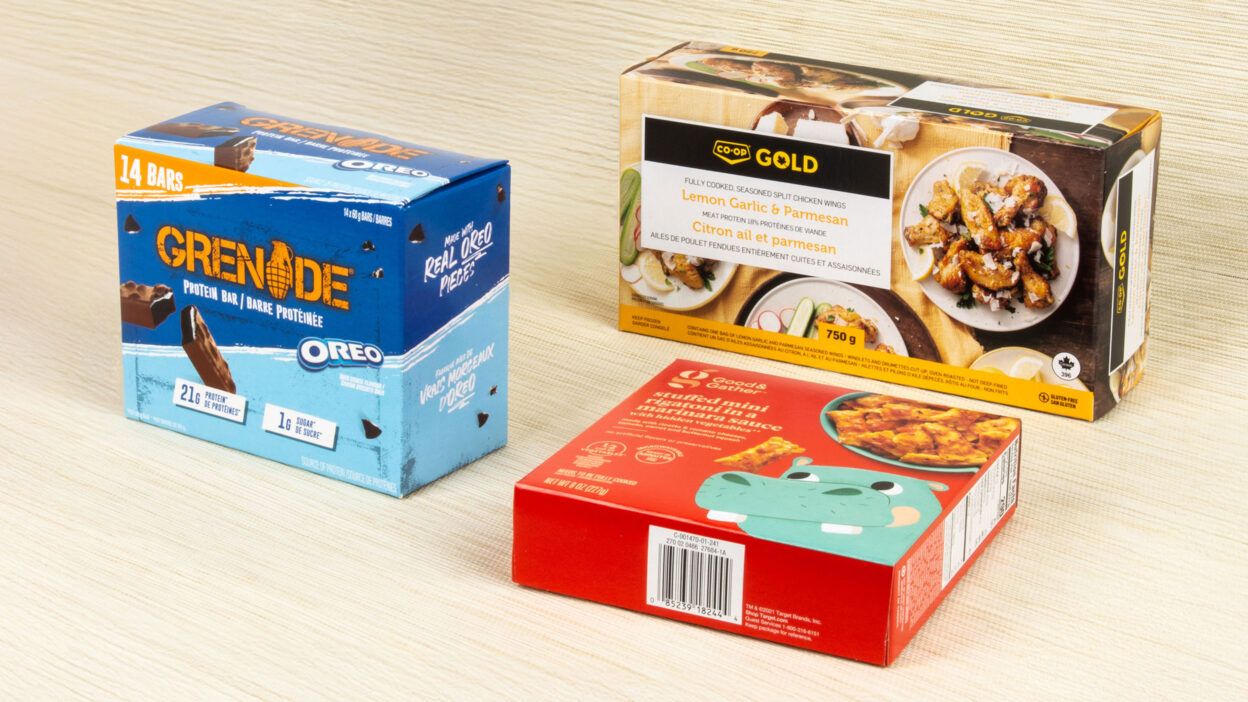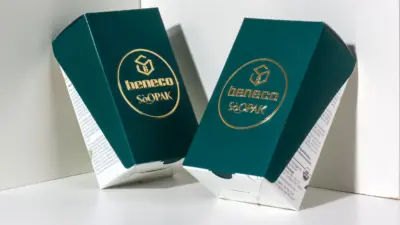In the world of food packaging, choosing the right ink isn’t just about print quality — it’s about consumer safety and regulatory compliance. One of the biggest decisions brands and converters must make is whether to use low migration inks or regular inks.
In this blog, we break down what low migration inks are, how they differ from conventional inks, and why they’re crucial for food and pharmaceutical packaging.
What Are Low Migration Inks?
Low migration inks are printing inks designed to minimize the transfer (or migration) of chemical substances from the printed layer into the packaged product — particularly food. These inks are formulated with high molecular weight components and low volatility materials to reduce the risk of contamination.
They are commonly used in:
- Food and beverage cartons
- Pharmaceutical packaging
- Cosmetic secondary packaging
- Flexible pouches with indirect contact
Why Ink Migration Matters
Ink migration happens when residual chemicals from inks (like solvents, photoinitiators, or plasticizers) move from the printed surface through the substrate and into the product — even when there is no direct contact. This can occur due to:
- Gas-phase migration
- Set-off during stacking
- Penetration through porous substrates
If not properly managed, migration can:
- Alter the taste, odor, or safety of food
- Trigger regulatory violations
- Lead to costly recalls and brand damage
Low Migration Ink vs. Regular Ink: Key Differences
| Feature | Low Migration Inks | Regular Inks |
|---|---|---|
| Safety | Compliant with food packaging regulations (EU, FDA, Swiss Ordinance) | Not suitable for food contact |
| Migration Risk | Very low | High if not protected by barriers |
| Color Appearance | May appear darker or deeper due to thin ink film | Brighter, more vivid tones achievable |
| Drying Time | Slower drying due to reduced volatile components | Faster drying with aggressive solvents |
| Application | Food, pharma, cosmetic, health-conscious brands | Commercial and retail packaging |
| Ink Cost | Higher due to specialized formulation | Lower |
Drying Time Considerations
One operational challenge with low migration inks is that they take longer to dry. Here’s why:
- Special Additives: These inks avoid fast-penetrating solvents to reduce migration, so drying relies more on absorption and less on evaporation.
- Ink Film Behavior: Since low migration inks are applied in thinner layers, they don’t build up heat or penetrate the substrate as quickly.
- External Conditions: Substrate porosity, coating type, temperature, and humidity can all impact drying speed.
Tip: Adjust drying systems and press speeds accordingly when switching to low migration workflows.
Do Low Migration Inks Affect Print Quality?
Yes — but not in the way many expect. While low migration inks were once thought to produce “duller” results, modern formulations often deliver richer, deeper colors — but with key differences.
Key Visual Characteristics:
- Darker Appearance: Because the inks are applied in thin, controlled films, the colors often appear darker or more saturated than traditional prints.
- Lower Gloss: Gloss and vibrancy may be reduced, especially without a top coating.
- Limited Pastels: Very bright, fluorescent, or pastel shades may be harder to achieve due to raw material restrictions.
Always conduct color proofing or drawdowns to ensure alignment with brand expectations.

Low Migration Coatings: Just as Important
Using low migration inks alone is not enough. If the job requires a coating (such as gloss, matte, or protective layer), it must also be a low migration coating.
Why?
- Prevents set-off during stacking
- Adds a barrier between ink and packaging content
- Reduces odor and chemical migration
- Meets full regulatory compliance
Types include:
- Water-based low migration coatings
- UV-curable low migration coatings
Ink and coating must work together to maintain compliance.
When to Use Low Migration Inks
You should use low migration inks if your packaging:
- Contains or is near food
- Is intended for pharmaceuticals or supplements
- Requires certification or export to the EU
- Targets organic, baby, or health-conscious product lines
- Will be wrapped tightly in films with no protective barriers
As regulations tighten and consumer awareness grows, low migration inks and coatings are becoming the standard in safe, responsible food packaging. While they require thoughtful application, longer drying times, and careful material selection, they ensure compliance, product integrity, and consumer trust.
Elevate Your Brand Packaging
Craft packaging that makes your products shine
Get started today!



